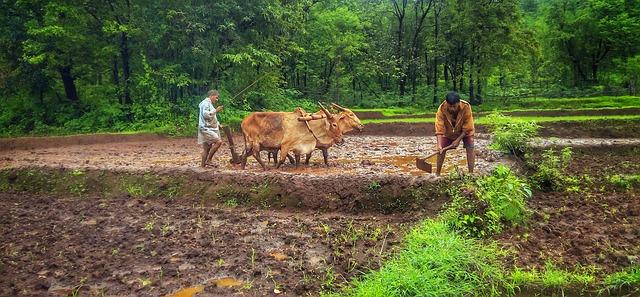
Over the last two years, agriculture growth has dipped to an average of half a per cent per annum. This has led to rural distress. The crisis is acute. It can only be tackled by putting agriculture growth back on track at a sustainable four per cent per annum. One can only hope that the mandarins in Delhi are connected to the soil of India in a way in which they can hear and heed its voice. If they continue to mishear what is being said, it could unleash forces which could strain the social fabric that holds us together as a nation.
To understand the nature of this crisis and what has been done, particularly in the form of the recent budget, we must hear some voices not from experts who analyse policy, but from farmers who experience it.
On being informed that the government had come out with a farmer’s budget with an allocation of around Rs.36,000 crore for them, Tukaram Mohite, a marginal landholder from Beed, Maharashtra, replied “Aamchya khishyat kaye ghlayacha asil ter paishe ghala, aakde nako”. (If you want to put something in our pockets, put cash through remunerative prices, not statistics). Shivaji Eknath Patil a progressive cultivator from Western Maharashtra stated, “Amal paije-shabd nako”.(Give us implementation, not words). Namdev, a herdsman from the dryland tract of Satara district said, “Nusti laach bandh kara, pragati aapo aap hoil” (Just plug corruption, progress will happen by itself).
The key sentiment is “please show us the implementation and ensure transmission of policy without leakages”. Short point: the Indian farmer can no longer be taken for a ride. While the budget announced by the government has been marketed as a pro-poor, pro-farmer budget focussed on reviving agriculture growth and improving farm incomes, a closer look might tell us a different story. True, Arun Jaitley announced increased allocations for irrigation, rural roads, electrification, crop insurance and other subsectors and added that the government would double the income of the farmers by 2022.
But what precisely does doubling farmers’ incomes in the next five years mean and how does the Finance Minister propose to do so? The strategy and the roadmap have not been spelt out. Thus with reference to which date is the doubling contemplated? Does it refer to real or nominal levels? Doubling agriculture GDP in five years implies an annual (nominal) growth rate of 14% in the sector which even its most ardent supporters would find difficult to believe. There is an immediate need to reassure the public that doubling of incomes is not misplaced political bravado but based on a carefully designed mix of technologically upgraded seeds and fertilisers, significantly expanded irrigation facilities, enhanced Minimum Support Price and market access on a commodity neutral basis.
The proposal to enable 50 per cent farmer’s access to crop insurance in two years is political hyperbole. Matching one overstatement with another, may I state that even if Lord Venkateswara were to come down from Tirumala, He will be unable to make the existing system of assessing crop damage based on crop cutting experiments to deliver what the Finance Minister has promised.
With regard to the additional allocation made for credit to agriculture, I recollect informal thinking at the government level way back in the early 2000s to double it. When the mathematics was done, it became apparent that while there was no way of doubling agriculture credit in absolute terms, its rate of growth could be increased two-fold. This was done but the lesson which came through at the end was that banking system driven credit expansion goes for increasing working capital and, therefore, does not lead to production, productivity gains or remunerative prices for the farmers. This is a lesson worth ruminating. There is another contra intuitive articulation from the ground which the government may like to think about: farmers are not enthused over loan waivers. As a smaller holder said, “Sagla natak hai mothya shetkariyana madat karneya saathi” (Loan waivers are a drama to benefit those who do not pay and punish those who do).
A deep-dive is required into the mathematics and economics of the insurance scheme that has recently been announced. The proposal to enable 50 per cent farmer’s access to crop insurance in two years is political hyperbole. Matching one overstatement with another, may I state that even if Lord Venkateswara were to come down from Tirumala, He will be unable to make the existing system of assessing crop damage based on crop cutting experiments to deliver what the Finance Minister has promised. The only way in which it can be done is to junk the existing damage assessment framework and to substitute it with an appropriate technological structure entailing suitably spaced weather stations reinforced by drones within an overarching framework of satellites.
The provision made for irrigation, both through budgetary support and market borrowing is Rs.12,517 crore. A further Rs. 6,000 crore is supposed to be spent on sustainable management of groundwater resources. In a vast country like India with 54 per cent of its arable land still without irrigation, this is clearly inadequate.
The short point is that if Indian agriculture is sought to be turned around, the allocations for augmentation of irrigation facilities need to be increased and firmly dovetailed to a credible water management system.
Those affected by the outcomes of an action look at a situation differently from those not involved in its consequences. In the end, the voices of the farmers are closer to the ground and will speak louder than lofty schemes or announcements.
(The writer is former Chairman of NABARD)



